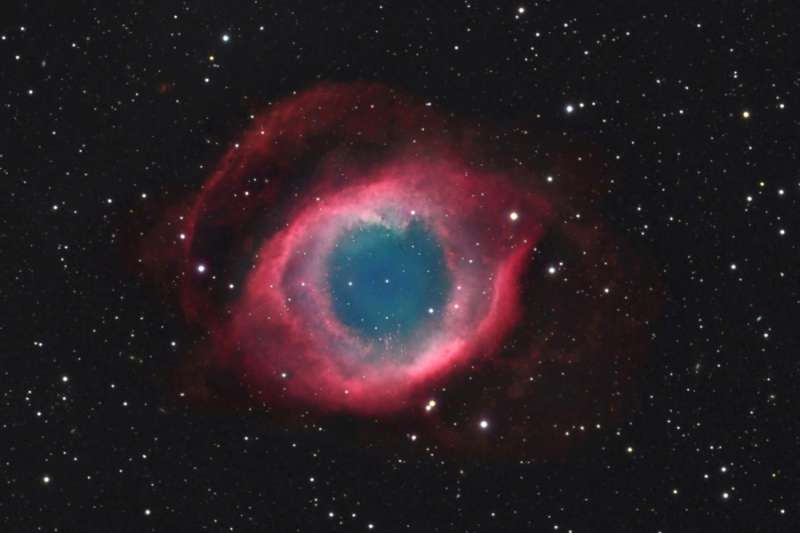Credit & Copyright: Ed Henry
(Hay Creek Observatory)
Explanation:
A mere seven hundred light years from Earth, in the constellation
Aquarius,
a sun-like star is dying.
Its last few thousand years have produced the
Helix
Nebula
(NGC 7293), a well studied and nearby example of a
Planetary
Nebula,
typical of this final phase of stellar evolution.
A total of 10 hours of exposure
time have gone in to creating this
remarkably deep
view of the nebula.
It shows details of the Helix's brighter
inner region, about 3
light-years across, but also follows fainter
outer halo
features that give the nebula a span of well over six light-years.
The white dot at the Helix's center is this Planetary Nebula's hot,
central star.
A simple looking nebula at first glance, the Helix
is now understood to have a surprisingly
complex geometry.
Authors & editors:
Robert Nemiroff
(MTU) &
Jerry Bonnell
(USRA)
NASA Web Site Statements, Warnings,
and Disclaimers
NASA Official: Jay Norris.
Specific
rights apply.
A service of:
LHEA at
NASA /
GSFC
& Michigan Tech. U.
Based on Astronomy Picture
Of the Day
